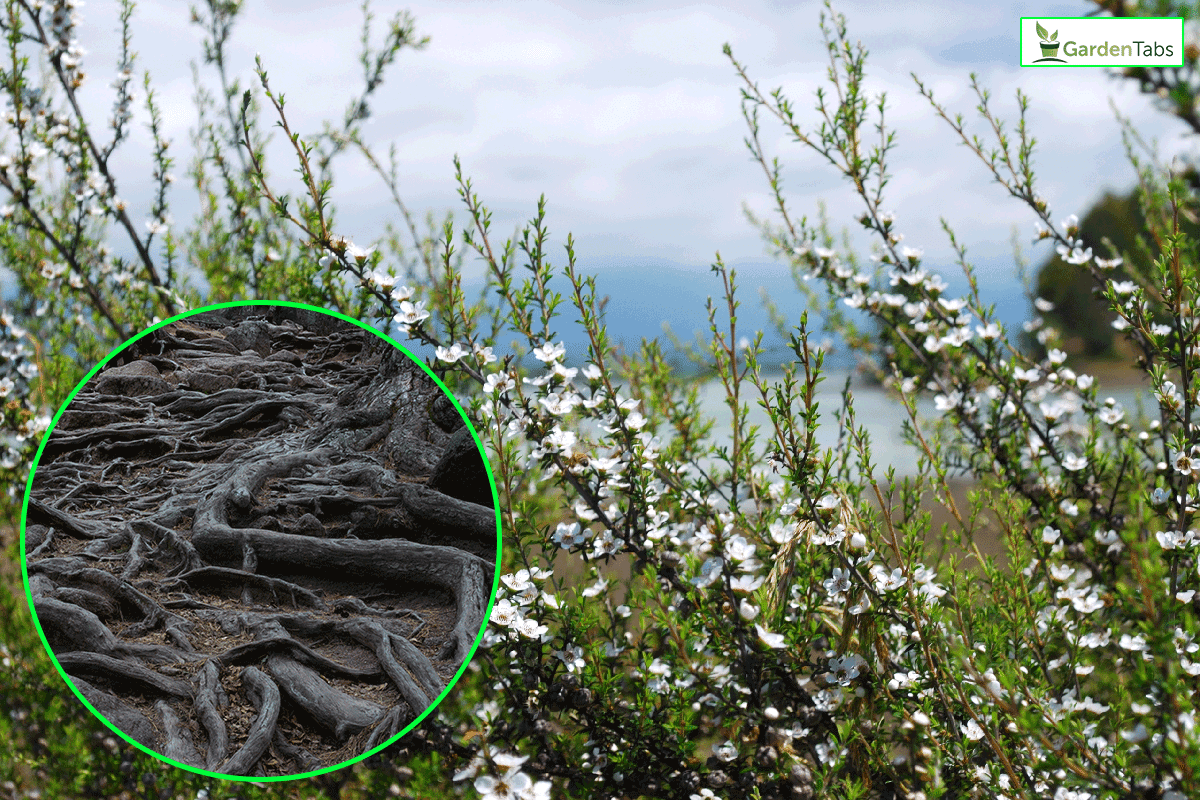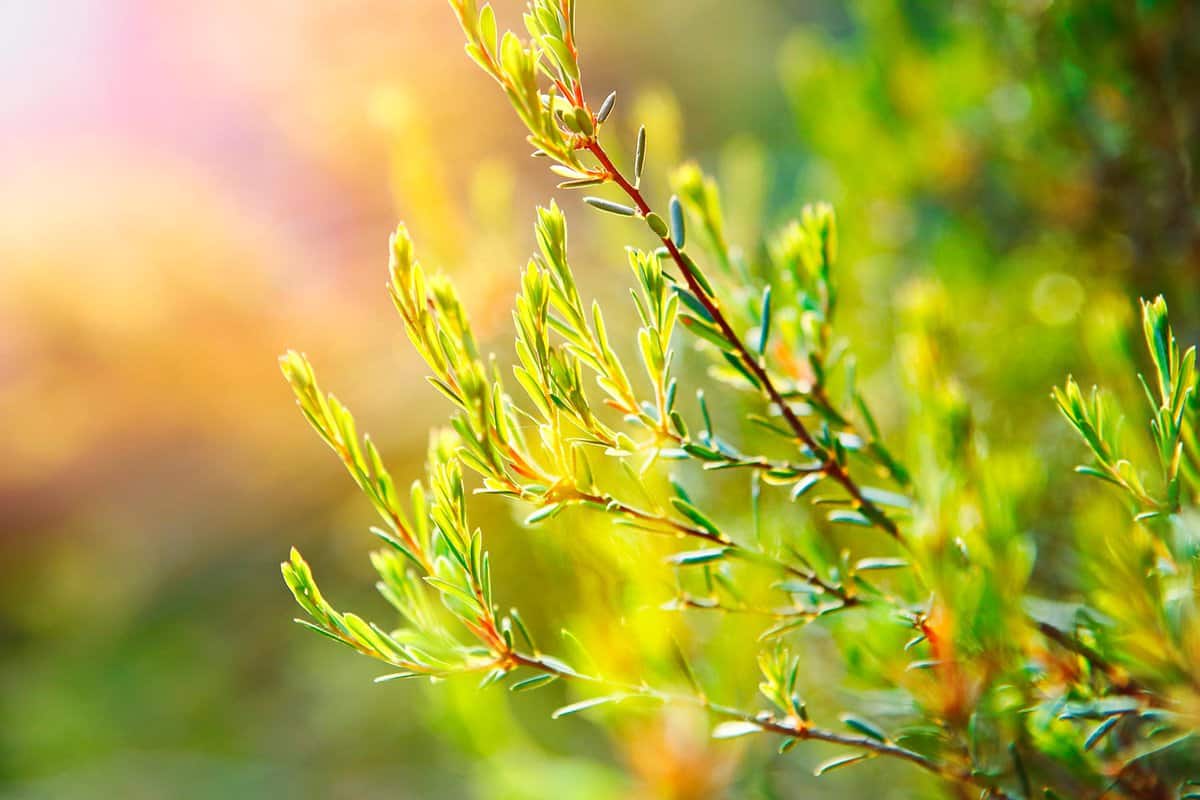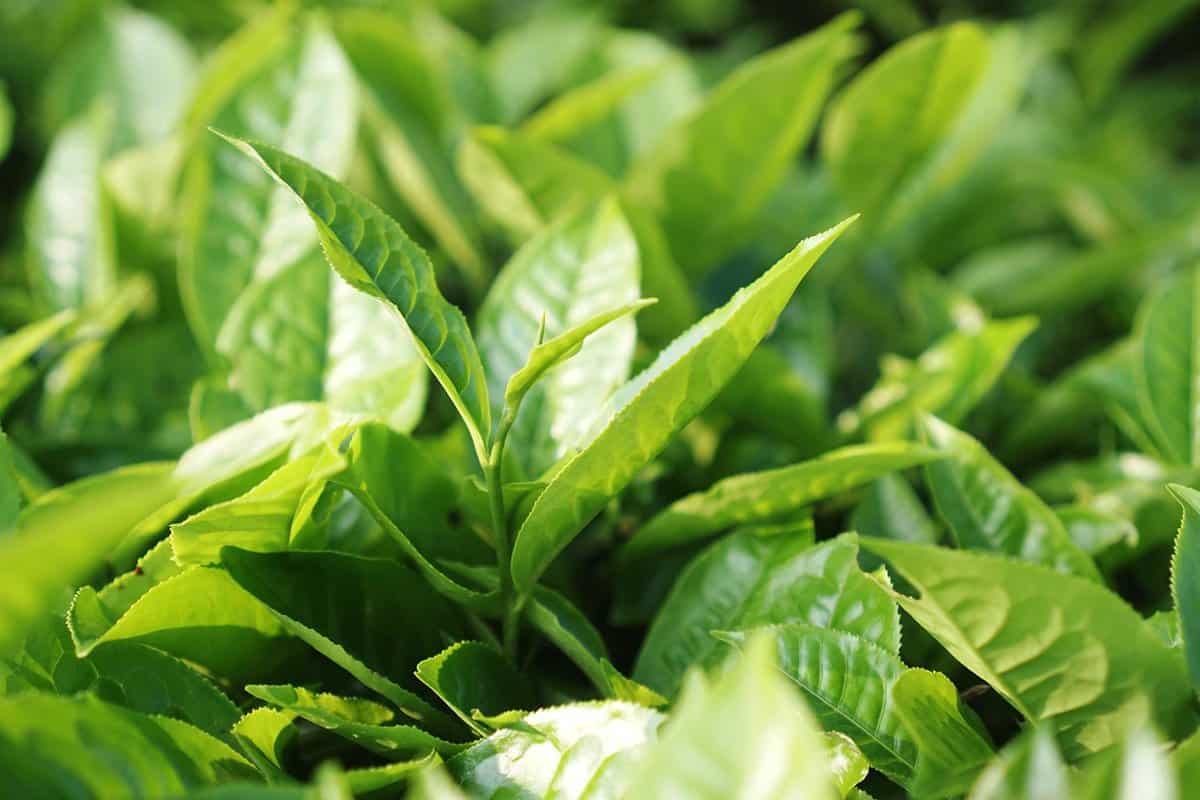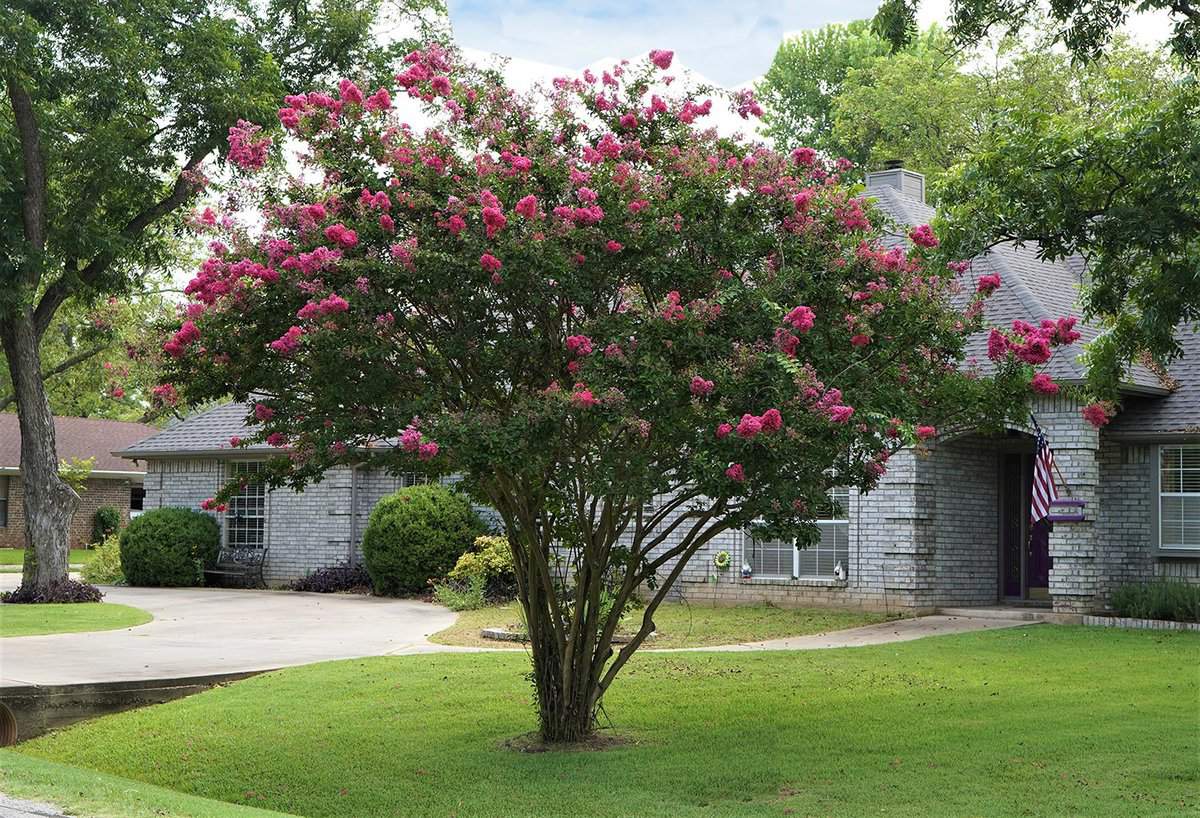We love the fragrant tea trees because of their appearance and benefits. But, if you are wondering about their root type, we heard you. So, we asked the experts to help you find out the answer.
Tea trees have invasive roots, meaning they branch out aggressively and outwardly when not maintained and deprived of water. Their invasive roots can become safety hazards for your home and neighborhood. Thus, stopping them from self-sowing and causing long-term structural problems.
Tea trees are known for their medicinal and ornamental uses. Thus, we will guide you about their qualities and how to care for them in this post. We will also answer other questions in your mind, so keep on reading.

What Are Invasive Tree Roots?
Roots are the anchor of plants for overall strength and performance. Similar to leaves, roots have different types: invasive and non-invasive.

Unlike non-invasive, invasive tree roots need more sources of water and nutrients because they grow faster. As a result, the roots spread too far and sideways as they seek areas with water, such as drains and pipes. In return, these roots are one of the common problems of homeowners.
Given that roots are usually underground, homeowners might overlook its growth. Thus, if invasive tree roots grow unhampered, one or more problems will arise.
Why Are Invasive Roots Problematic?
Here are a few reasons these roots are giving burdens to homeowners.
- Destroy pavements and driveways.
- Infiltrate the foundation of your home.
- Shatter tiles and window panels.
- Invade neighbors' area.
- Clog outdoor sewage system.
- Reduce water pressure.
- Cost high when removed.
How To Prevent Invasive Plants' Damages?
Although the tea tree's aggressive roots have drawbacks, there are several countermeasures you can perform. Generally, you must be adept at how and where to grow your preferred plant.
Not all plants are suitable for your yard. For this reason, you can consult a certified arborist for landscape assessment before planting. This technique will keep you from plenty of headaches and equip you for maintenance.
If you prefer trees with invasive roots like tea trees, the optimal distance from the foundation of your house is between 25 to 50 feet.
Planting in a large pot with good drainage is also an affordable way to avoid the distressful infiltration of roots. A versatile air pruning pot reduces the chance of root circling and over-watering. Moreover, when the plant becomes more mature, you can remove the screws of the planter and transfer the sapling to a bigger pot.
Click here to see this roots control planter on Amazon.
Similarly, the root barrier system is a long-term solution for this concern. This system focuses on the growth training of your tree's roots in a specific direction. Whether applied in linear or surround, you must block the excessive root growth and place it based on the location of the driveways, sidewalks, foundations, and pipes.
Likewise, with a flexible polypropylene membrane, the plant will be healthy despite the restricted roots. Root barriers are durable defense panels for trees, whether fully grown or sapling. While the mature ones must have parallel sheets, cover the sapling's perimeter with barriers for 360-degree protection.
Click here to see this root barrier on Amazon.
Characteristics Of Tea Trees

Aside from the invasive roots, tea trees have other qualities you must know to take care of them properly.
The tea tree has a botanical name, Melaleuca alternifolia. Similarly, others called it snow-in-summer or narrow-leaved paperback. Although tea trees originated from the coastal areas of Queensland and New South Wales, Australia, they are abundant in Hawaii, Florida, and California, USA.
Description
These shrubs have long and slender leaves. The arrangement of their leaves is scattered or alternating. Thus, scientists gave their specific or second name alternifolia. Their flowers have clustered petals, but sometimes there are no petals, making them incomplete or naked flowers. Similar to trees from the Melaleuca species, its trunk has papery or flaky bark, despite being hardy.
Common Uses
Tea trees are ecological weeds because they are water-hungry plants. Hence, they served as absorbent material for swamps. But eventually, they become more useful in households.
Since they are shrubs, you can use them to form a windbreaker hedge or screen. Manufacturers also processed the paperback to create bandages, raincoats, and aluminum foils, to name a few. Likewise, you can take advantage of their aroma with the right skills. As an essential oil, it comes with several benefits. These include healing your skin and cleansing surfaces within the home. However, refrain from using the raw form for safety.
Related Trees
Meanwhile, there are several related shrubs to the tea tree. One of them is the lemon-scented tea tree (Leptospermum petersonii). It belongs to the myrtle family, like the tea tree. Thus, they share a handful of physical properties. For instance, the lemon-scented tea tree is also famous for its therapeutic scent. Nonetheless, its spiked leaves have a citrus odor when crushed.
Care Tips
A beginner can watch out for this low-maintenance shrub because the tea tree rarely contracts diseases and is usually pest-free, except for spider mites and scale insects. Whether from seeds or cuttings, you can propagate it.
How Fast Does A Tea Tree Grow?
It will take three years before a tea tree reaches its maturation. Its height can grow to 9 feet (2.75 meters) after development. The lifespan of a tea tree is estimated to be 100 years.
To grow fast, it has primary and specific requirements. Here are ways to cultivate it.
- Soil type can be loamy or sandy.
- Soil pH can fluctuate from acidic to neutral.
- It requires partial to full sunlight.
- The ideal locations are south and west.
- Its USDA plant hardiness zones are 9 and 8.
- It thrives near bodies of water, such as swamps and streams
- It can withstand warm and humid places.
Meantime, watch this clip to understand how they grow tea trees in plantations.
Are Tea Trees Evergreen?
Throughout the year, the leaves of tea trees are green and do not lose their foliage, regardless of the season. Furthermore, its flowers bloom from spring to summer. These shrubs will mesmerize you with their white or pink flowers.
Can You Hard Prune A Tea Tree?
A tea tree cannot tolerate hard pruning. Despite this, pruning plays a significant role in controlling the risk of plant decay and obstruction in your fences or pathways. For this reason, trim it annually, especially when it is young and after flowering. It will preserve its size and shape. Furthermore, plant enthusiasts create a bonsai version of this plant.
In trimming the tea tree, you will need pruning shears and follow simple steps. First, cut the damaged and dead branches and stems. Next, snip the uneven stems. Finally, form the shape depending on your desired look. However, ensure the trimmed length is less than one-third of the original size.
Click here to see this heavy-duty trimmer on Amazon.
Why Is It Called Tea Tree?

The tea tree leaves emit a nutmeg-like scent. Thus, the captain, who discovered the tea tree, infused its leaves like tea for scurvy prevention. Hence, it is the name of this plant.
Remember, it is not similar to the tea shrub called Camellia sinensis, where producers extract the green or black tea.
What Trees Cause Invasive Damage?
Identifying whether or not the tree you like is destructive is a safety measure before sowing. Hence, the following are the 15 trees with invasive roots which are unsuitable for small or average-sized yards.
- American Elm (Ulmus Americana)
- Camphor Laurel (Cinnamomum camphora)
- Evergreen Alder (Alnus acuminata)
- Evergreen Figs (Ficus)
- Golden Chain Tree (Laburnum)
- Gums (Eucalyptus)
- Liquidambar (Liquidambar styraciflua)
- Palms (Arecaceae)
- Pride of Bolivia (Tipuana tipu)
- Silver Maple (Acer saccharinum)
- Sycamore (Platanus occidentalis)
- Tree of Heaven (Ailanthus altissima)
- Willow (Salix)
- White Mulberry (Morus alba)
- White Poplar (Populus alba)
What Trees Can You Plant Close To Your Houses?

In this section, we collected a selection of low-maintenance alternatives that offer shade and beauty to your landscape. To help you decide quickly, here are the 15 non-invasive trees without compromise.
- American Holly
- American Hornbeam
- Adamas Crabapple
- Crepe Myrtle
- Flowering Dogwood
- Hawthorn
- Japanese Maple
- Loquat
- Pawpaw
- Pendula
- Rose of Sharon
- Rowans
- Serviceberry
- Snow Gum
- Star Magnolia
How Far Away Trees Should Be From Your House?

In addition to the root growth, you must also consider the distance trees from your house based on the tree size and sunlight requirement.
The best location for large trees over 70 feet tall is 20 feet from your home. But, if you want medium-sized trees, plant them at least 15 feet from your home because their height reaches 70 feet. Small trees less than 30 feet must be at least 10 feet away from home.
Another factor to consider is the quality of sunlight because it is crucial to keep your plants healthy. Trees can tolerate sunlight or lack of it differently. Thus, you must seek the botanists' or gardeners' advice. You can also cultivate it first in a pot and change its location regularly to determine its best location within your place.
Final Thoughts
The tea tree has aggressive roots under certain conditions. However, when you invest in a root barrier system, you can still appreciate its appeal. Moreover, you must know other trees with this root type to avoid the consequences of unchecked roots. Otherwise, opt for the low-maintenance non-invasive trees. In the end, what matters in tree planting is your safety, location, and preferences.
Thanks for reading! If you enjoyed this post, explore these related articles.
Do Cedar Elm Trees Have Invasive Roots? [And Where To Plant Them]
15 Fruit Trees With Non-Invasive Roots
How Do You Stop Pine Tree Roots From Growing? [5 Actionable Solutions]



